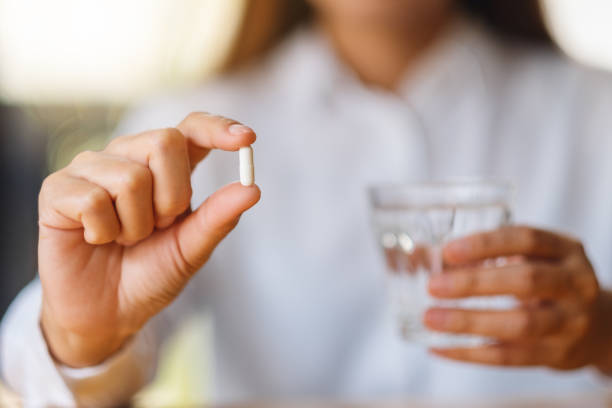Sensory Analysis Guide for the Health and Pharmaceutical Industry

Chapter 1 : Introduction to Sensory Analysis
Sensory analysis is an essential discipline that allows us to understand how humans perceive the world around them through their senses. This introduction provides an overview of key concepts in sensory analysis, its importance in the health and pharmaceutical industry, and the goals of this book.
Sensory analysis is based on the principle that our senses play a central role in how we interact with products and environments. Whether it's the color of a medication, the taste of a dietary supplement, or the scent of a lotion, sensory sensations influence our perceptions and decisions.
Throughout this book, you will discover how sensory analysis can be used to improve the quality of health products, assess the effectiveness of medications, and better understand patient preferences. We will also address the ethical aspects of sensory research in the health field.
Prepare to delve into a world of exciting sensory discoveries. This book will guide you through each step of sensory analysis, providing detailed information, practical examples, and tips for conducting high-quality sensory evaluations. Explore the multiple dimensions of sensory perception and discover how they influence our understanding and experience of health and pharmaceutical products.

Chapter 2 : Foundations of Sensory Perception
To fully grasp sensory analysis, it's essential to delve into the foundations of human sensory perception. This chapter guides you through the complex processes that occur when our senses come into play.
Sensory perception begins with the reception of sensory stimuli by our sensory organs, such as the eyes, ears, nose, mouth, and skin. These organs convert these stimuli into electrical signals that are then transmitted to the brain. The brain processes these signals to create our sensory experience, what we perceive as color, sound, smell, taste, and texture.
This sensory processing is fascinating and complex. We will examine the neurological mechanisms behind sensory perception, including how different parts of the brain interact to create a coherent and meaningful experience.
Additionally, we will explore the concept of sensory thresholds, the limits beyond which a stimulus becomes perceptible. Understanding these thresholds is crucial for designing health and pharmaceutical products that are pleasing and effective for patients.
Finally, we will discuss sensory biases, perceptual tendencies that can influence our judgments. By recognizing these biases, you will be better prepared to design robust sensory studies and interpret results accurately.
This chapter lays the necessary groundwork for a deeper exploration of sensory analysis. You will develop a solid understanding of how our senses function and how they can be scientifically evaluated.
Prepare to dive deeper into the world of sensory perception as we explore concepts such as the just noticeable difference, sensory adaptation, and much more. By understanding these fundamental concepts, you will be better equipped to conduct meaningful sensory evaluations in the health and pharmaceutical field.


Chapter 3 : Sensory Evaluation Methodologies
In this chapter, we will delve into the essential methodologies for conducting rigorous sensory evaluations. Sensory analysis relies on precise scientific methods to gather reliable and informative data on human sensory responses.
We will examine in detail the different approaches used in sensory studies, including discriminative tests, descriptive tests, and affective tests. Each of these methods has its own goals and applications, and you will learn how to choose them based on your specific needs in the health and pharmaceutical field.
Additionally, we will discuss samples and how to select them for your sensory studies. Thoughtful participant selection and managing potential biases are key elements for the success of any sensory evaluation.
We will also address the primary parameters measured during sensory evaluations, such as intensity, preference, familiarity, and many others. You will discover how these parameters can be used to obtain valuable information about the sensory perceptions of your health and pharmaceutical products.
Finally, we will highlight the tools and software available to facilitate the collection and analysis of sensory data. These modern resources can streamline the process and help you achieve results more quickly and accurately.
This chapter will prepare you to plan and execute effective sensory evaluations. Whether you want to enhance the taste of a medication, evaluate the texture of a pharmaceutical product, or understand patient preferences, sensory analysis methodologies will be your essential guide.

Chapter 4 : Visual Sensations in Health and Pharmaceuticals
This chapter delves deeply into the impact of visual sensations on the perception of health and pharmaceutical products. Vision is one of our most powerful senses and plays a crucial role in how we evaluate and choose these products.
We will explore visual elements that can influence our perception, such as color, shape, size, and product labeling. You will learn how to carefully choose these elements to communicate important information to patients and consumers.
The use of graphics, diagrams, and images in pharmaceutical documents will also be discussed in detail. You will discover how these visual elements can be strategically used to explain complex information to patients and healthcare professionals.
We will also explore standards and regulations regarding the packaging and labeling of health products, as well as considerations related to visual accessibility for individuals with visual impairments.
Ultimately, this chapter will give you a thorough insight into how visual elements can be used to enhance the patient experience, build trust in pharmaceutical products, and facilitate the understanding of essential medical information.
Get ready to dive into the visual world of the health and pharmaceutical industry as we explore the many ways vision influences our perceptions and decisions.

Chapter 5 : Auditory Sensations and Sound Perception
This chapter immerses you in the fascinating world of auditory sensations and sound perception in the realm of health and pharmaceuticals. Our hearing plays a crucial role in our sensory experience, whether listening to a doctor's instructions or evaluating the quality of a pharmaceutical product.
We will explore sounds associated with health, such as heartbeats, lung sounds, and medical alert signals. Understanding how these sounds are perceived and interpreted is crucial for healthcare professionals. Additionally, we will address the sound design of pharmaceutical products, including alarms and auditory warnings. You will discover how sound design can contribute to the safety and effectiveness of medications and medical devices.
We will also discuss the impact of ambient noise on patient perception in healthcare environments, as well as strategies to reduce auditory stress and improve patient well-being.
This chapter will provide you with a comprehensive understanding of how auditory sensations influence our experience in the field of health and pharmaceuticals. By understanding the importance of sound perception, you will be better prepared to design products and environments that cater to the auditory needs of patients and healthcare professionals.


Chapter 6 : Olfactory Sensations in Health Products
This chapter takes you into the intriguing world of olfactory sensations and their crucial role in health products. Smell is one of our most powerful senses for assessing the quality and effectiveness of pharmaceutical and medical products.
We will delve into the science of smell, exploring how our nose detects and interprets odor molecules. You will discover how smells can trigger emotional responses and influence patient perceptions.
Additionally, we will address the importance of smell in pharmaceutical products, from medications to personal care products. You will learn how fragrances and neutral odors are used to enhance the patient experience and ensure product safety.
We will also examine the challenges related to odor management in healthcare environments, highlighting the importance of cleanliness and disinfection while preserving air quality.
This chapter will provide you with a comprehensive overview of how olfactory sensations play a crucial role in the perception of health products. You will be better prepared to design pharmaceutical and medical products that are pleasing to the sense of smell while ensuring their effectiveness and safety.

Chapter 7 : Taste and Gustatory Perception
In this chapter, we will explore one of the most intimate and influential senses in the field of health and pharmaceuticals: taste and gustatory perception. Our ability to taste foods and medications plays a crucial role in our sensory experience.
We will delve into the science of taste, describing taste buds, taste receptors, and the different flavors we perceive: sweet, salty, sour, bitter, and umami. You will understand how these flavors interact to create a unique gustatory experience.
Additionally, we will discuss the importance of taste in pharmaceutical products, from medications to dietary supplements. You will discover how product formulation can influence their taste and how manufacturers seek to make medications more palatable for patients.
We will also address challenges related to taste alterations in the health domain, including the side effects of medications that can impact patients' gustatory perception.
Ultimately, this chapter will help you understand how taste influences patient satisfaction and treatment adherence. You will be better prepared to design health products and medications that are not only effective but also enjoyable for patients of all ages.
Get ready to explore the diversity of flavors and gustatory experiences in the field of health and pharmaceuticals as we dive into the world of taste and gustatory perception.

Chapter 8 : Touch and Textures
This chapter will take you into the world of touch and textures, an often overlooked yet essential aspect of sensory analysis in the health and pharmaceutical industry. Touch plays a crucial role in how we assess medical and pharmaceutical products, from the smoothness of a lotion to the texture of a pill.
We will delve into the mechanisms of touch, exploring how our skin detects and interprets different textures. You will discover how tactile sensations can influence our perceptions and preferences.
Additionally, we will discuss the importance of touch in health products, from the ergonomics of medical devices to the user-friendliness of packaging. You will learn how the design of surfaces and tactile interfaces can enhance the experience for patients and healthcare professionals.

We will also examine considerations related to hygiene and safety in health products, highlighting the importance of texture to prevent slips and accidents.
This chapter will provide you with a thorough overview of how touch and textures influence the perception of health products. By understanding how tactile sensations are essential for patient satisfaction, you will be better prepared to design medical and pharmaceutical products that meet their comfort and safety needs.
Get ready to explore the world of touch, from soft surfaces to rough textures, in the field of health and pharmaceuticals.
Chapter 9 : Evaluation of Colors and Shapes
In this chapter, we will delve into the importance of evaluating colors and shapes in the health and pharmaceutical industry. How colors are perceived and shapes interpreted plays a crucial role in the design and communication of products.
We will explore the psychology of colors and their impact on the emotions and behaviors of patients. You will discover how to judiciously choose colors to create positive associations with health products, from packaging to healthcare environments.
Additionally, we will address the importance of shapes and symbols in communicating medical information. You will learn how shapes can be used to simplify instructions and make products more user-friendly for patients.


We will also discuss challenges related to the perception of colors and shapes in patients with visual impairments, as well as accessibility strategies to ensure that all patients can understand important information.
This chapter will give you a thorough insight into how colors and shapes can be used to improve the user-friendliness and effectiveness of health and pharmaceutical products. By understanding the impact of these visual elements, you will be better prepared to design products that meet the needs and preferences of patients.
Get ready to explore the rich universe of colors and shapes in the field of health and pharmaceuticals as we discover how these visual elements influence our perception and experience of products.
Chapter 10 : Emotional Responses to Sensory Stimuli
In this chapter, we will dive into the captivating world of emotional responses to sensory stimuli in the field of health and pharmaceuticals. Emotions play a crucial role in how patients perceive and interact with medical and pharmaceutical products.
We will explore how different sensory sensations, such as sight, smell, taste, and touch, can trigger varied emotional responses. You will discover how emotions can influence patient decisions, from treatment adherence to overall satisfaction.
Additionally, we will address the importance of emotional design in health products, highlighting how packaging, colors, and shapes can evoke positive emotions in patients. You will learn how to create sensory experiences that build trust and satisfaction.

We will also discuss challenges related to managing emotions in the healthcare context, emphasizing the importance of empathy and empathic communication in delivering quality care.
This chapter will provide you with a comprehensive understanding of how emotional responses to sensory stimuli influence patient perceptions and behaviors. By understanding the importance of emotions in the field of health and pharmaceuticals, you will be better prepared to design products and experiences that meet the emotional needs of patients.
Get ready to explore the world of sensory emotions as we discover how to create experiences that leave a positive impression on patients and enhance their overall well-being.
Chapter 11 : Comparative Sensory Analysis
In this chapter, we will delve into comparative sensory analysis, a powerful method for evaluating and comparing various health and pharmaceutical products. This approach enables industry professionals to make informed decisions by identifying the sensory characteristics that make a difference.
We will explore comparative evaluation techniques, including blind tests and triangle tests, which determine whether participants can perceive sensory differences between two products.

Additionally, we will discuss sensory rating scales and how to collect quantitative data for objective product comparisons. You will learn how to analyze results statistically to identify significant differences.
We will also address the importance of repeatability and precision in comparative sensory studies, along with considerations for selecting tasting panels to ensure reliable results.
This chapter will provide you with a thorough understanding of how comparative sensory analysis can be used to evaluate and enhance health and pharmaceutical products. By comprehending the advantages and limitations of this approach, you will be better prepared to make informed decisions in product development.
Prepare to master the art of comparative sensory analysis as we explore methods and best practices to evaluate and enhance the quality of health and pharmaceutical products.
Chapter 12 : Acceptance and Preference Tests
In this chapter, we will dive into the realm of sensory acceptance and preference tests, essential for understanding patients' expectations and desires regarding health and pharmaceutical products.
We will explore methods for measuring product acceptance, including hedonic tests and satisfaction evaluations. Discover how these methods gather patient responses regarding taste, smell, texture, and other sensory characteristics.
Additionally, we will discuss preference tests that help determine patients' favored products when faced with multiple options. Learn how these tests can assist manufacturers in refining their products to meet market preferences.


We will also address how to design acceptance and preference studies, including sample selection and managing potential biases. Discover how to interpret results to make informed decisions about the formulation and marketing of health products.
This chapter will help you understand how to measure and respond to patient expectations regarding health and pharmaceutical products. By comprehending the importance of sensory acceptance and preferences, you will be better prepared to develop products that meet patients' needs and desires.
Prepare to explore the world of sensory acceptance and preference tests as we discover how to implement these methods to improve patient satisfaction and the success of health products.
Chapter 13 : Sensitivity to Change
This chapter will take you into the realm of sensory sensitivity to change, a crucial aspect of sensory analysis in the health and pharmaceutical industry. Understanding how patients react to sensory modifications is essential for improving existing products and developing new formulations.
We will explore methods for evaluating sensitivity to change, including perceptible difference tests and sequential sensitivity tests. Discover how these methods help determine if patients can perceive changes in the sensory characteristics of products.
Additionally, we will discuss sensory perception thresholds, the limits beyond which a change becomes noticeable. Learn how these thresholds vary depending on sensory characteristics and how they influence product formulation.

We will also address how to manage sensory changes in health and pharmaceutical products, emphasizing the importance of communication with patients and healthcare professionals during these transitions.
This chapter will give you a thorough understanding of how sensory sensitivity to change can be assessed and used to improve health products. By understanding how patients react to sensory modifications, you will be better prepared to make informed decisions regarding product formulation and quality.
Prepare to explore the world of sensory sensitivity to change as we discover how this facet of sensory analysis can be a powerful tool for improving health and pharmaceutical products.
Chapter 14 : Interpreting Sensory Results
In this chapter, we will delve into the art of interpreting sensory results, a crucial step in deriving meaningful conclusions from data collected during sensory evaluations in the health and pharmaceutical industry.
We will examine different statistical and analytical approaches used to interpret sensory data, such as principal component analysis, analysis of variance, and modeling methods. Learn how these tools help uncover trends and insights from raw data.
Additionally, we will discuss the importance of sensory result validation, highlighting the significance of data reproducibility and reliability. Discover how to ensure result quality for making informed decisions.

We will also address how to effectively communicate sensory results to stakeholders, from research and development teams to company decision-makers. Understand how to present data clearly and persuasively to influence decisions.
This chapter will equip you with the skills to confidently interpret sensory evaluation results in the health and pharmaceutical industry. By understanding how to transform data into actionable information, you will be better prepared to enhance product quality and meet patient needs.
Prepare to master the art of interpreting sensory results as we explore methods and best practices to extract meaningful insights from sensory data in the health and pharmaceutical industry.
Chapter 15 : Applications of Sensory Analysis in the Health and Pharmaceutical Industry
This final chapter will thoroughly explore the many practical applications of sensory analysis in the health and pharmaceutical industry. Discover how this discipline influences various aspects of the sector, from drug formulation to packaging design.
We will address the optimization of drug formulations, explaining how sensory analysis can help strike the right balance between effectiveness and user-friendliness for patients. Understand how sensory characteristics of drugs, such as taste and texture, can be enhanced to ensure better treatment adherence.


We will also discuss the design of user-friendly packaging, highlighting the importance of sensory analysis in creating easy-to-open and use packaging, especially for elderly patients or those with disabilities.
Explore the applications of sensory analysis in health product research and development, quality management, patient satisfaction, and market differentiation.
Finally, we will address emerging trends and opportunities in the field of sensory analysis in the health and pharmaceutical industry, including the incorporation of virtual reality and artificial intelligence for more precise and rapid sensory evaluations.
This chapter concludes our exploration of sensory analysis in the health and pharmaceutical industry. You will come away from this book with a deep understanding of how this discipline is an essential asset for ensuring quality, safety, and patient satisfaction in the health sector.
Prepare to apply the knowledge gained throughout this book to improve patients' lives and contribute to the development of high-quality health and pharmaceutical products. Sensory analysis will continue to be an indispensable tool to meet the sensory and emotional needs of patients in an ever-evolving industry.
